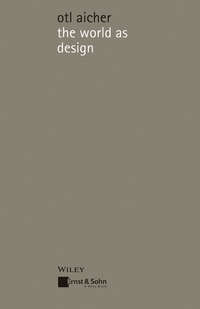Книги жанра архитектура
Now almost 20 years old, the digital turn in architecture has already gone through several stages and phases. Architectural Design (AD) has captured them all – from folding to cyberspace, nonlinearity and hypersurfaces, from versioning to scripting, emergence, information modelling and parametricism. It has recorded and interpreted the spirit of the times with vivid documentary precision, fosterin…
Prepare for the LEED Green Associate v4 exam with an expert who has been there – and passed! Guide to the LEED Green Associate V4 Exam is a comprehensive study guide for the LEED Green Associate v4 exam. Written by a LEED expert and consultant who actually passed the exam, this guide provides a first-hand account of preparation strategies that work. The book is designed to work with how people stu…
Architecture, Sustainable Design A comprehensive book on the sustainable design of research laboratories Today's research laboratories are complex and difficult building types to design, and making them sustainable adds more obstacles. Written by members of the well-known firm KlingStubbins, under the guidance of its Directors of Laboratory Planning, Engineering, and Sustainability, Sustainable De…
This primer for architects explores the basic physical principles and requirements of every aspect of passive and active controls in buildings. Avoiding needless jargon, Environmental Issues for Architecture supports an understanding of environmental systems in order to inform architectural design. With topics ranging from lighting, acoustics, thermal control, plumbing, fire protection and egress,…
An essential guide for a firm of any size to effectively position itself in the marketplace For an architecture or design firm to survive and prosper in the new economy, it needs to redefine and reinvigorate its position in the marketplace. With dozens of how-to cases, examples, and guidelines, Positioning for Architecture and Design Firms provides the entire menu of tools, plus the inspiration ne…
Any architect doing small or medium scaled projects who is also vested in sustainable design but is not yet doing BIM will enjoy this book's overall focus.-Architosh.com This work is the leading guide to architectural design within a building information modeling (BIM) workflow, giving the practitioner a clear procedure when designing climate-load dominated buildings. The book incorporates new inf…
Solar Energy is an authoritative reference on the design of solar energy systems in building projects, with applications, operating principles, and simple tools for the construction, engineering, and design professional. The book simplifies the solar design and engineering process, providing sample documentation and special tools that provide all the information needed for the complete design of a…
Otl Aicher's writings are explorations of the world, a substantive part of his work. In moving through the history of thought and design, building and construction, he assures us of the possibilities of arranging existence in a humane fashion. As ever he is concerned with the question of the conditions needed to produce a civilised culture. These conditions have to be fought for against apparent f…
A must-have reference to create content-rich BIM objects and models A cutting-edge technology, Building Information Modeling (BIM) software allows AEC professionals to produce data-intensive 3D building models that far exceed those rendered with the 2D limitations of CAD, today's industry standard. Unlike CAD, however, no consensus has been reached among AEC industries for agreed upon guidelines d…
The new student edition of the definitive reference on architectural interiors Interior Graphic Standards, Student Edition is a carefully edited treatment of the authoritative Interior Graphic Standards Professional Edition. Designed and organized to give students the specific information they require, this is an essential reference for anyone studying architectural interiors. New topics include a…
As more factors, perspectives, and metrics are incorporated into the planning and building process, the roles of engineers and designers are increasingly being fused together. Sustainable Infrastructure explores this trend with in-depth look at sustainable engineering practices in an urban design as it involves watershed master-planning, green building, optimizing water reuse, reclaiming urban spa…
The Great American Dream of cruising down the parkway, zipping from here to there at any time has given way to a true nightmare that is destroying the environment, costing billions and deeply impacting our personal well-being. Getting from A to B has never been more difficult, expensive or miserable. It doesn't have to be this way. Jeffrey Tumlin's book Sustainable Transportation Planning offers e…
An innovative look at design solutions for building lifelong neighborhoods Livable Communities for Aging Populations provides architects and designers with critical guidance on urban planning and building design that allows people to age in their own homes and communities. The focus is on lifelong neighborhoods, where healthcare and accessibility needs of residents can be met throughout their enti…
Architecture is on the brink. It is a discipline in crisis. Over the last two decades, architectural debate has diversified to the point of fragmentation and exhaustion. What is called for is an overarching argument or set of criteria on which to approach the design and construction of the built environment. Here, the internationally renowned architect and educator Michael Hensel advocates an enti…
Once condemned by Modernism and compared to a ‘crime’ by Adolf Loos, ornament has made a spectacular return in contemporary architecture. This is typified by the works of well-known architects such as Herzog & de Meuron, Sauerbruch Hutton, Farshid Moussavi Architecture and OMA. There is no doubt that these new ornamental tendencies are inseparable from innovations in computer technology. The proli…














